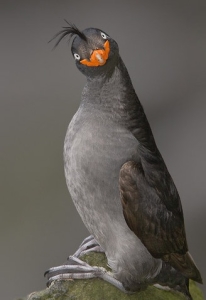Plants create essential oils by mixing together dozens of fragrant molecules. The functions of these fragrant molecules is primarily to attract pollinators and repel herbivores (generally insects in both cases) and to guard against fungal or bacterial infection. Interestingly, bacteria often produce fragrant molecules too. Insects produce the same aromatic molecules, which they use for intra-species communication. In insects we call them pheromones, and they impart messages that relate to mating, scent trails to food, alarm signals etc.
Mammals don’t produce the same highly volatile fragrant molecules. In order to use them to communicate a message, we need to artificially apply a fragrance. Actually mammals do produce fragrant molecules, but they are generally of low volatility, so our body and breath odors do not travel far, and are only perceptible at close range. Unless you’re a dog, or a musk deer. Until recently it was thought that birds did not produce them either, but we now know of two closely-related, highly fragrant bird species.
The crested auklet (Aethia cristatella) nests in huge colonies in the Bering Sea and Sea of Okhotsk. This is a highly social seabird with a forward-pointing ponytail, an orange-colored beak and a cute smile. Most of the research on its fragrance has been authored by Hector Douglas, Assistant Professor of Biology at the University of Alaska’s School of Fisheries and Ocean Sciences. Douglas became intrigued when he learned that mariners know their proximity to some Bering Sea islands when they smell a strong citrus odor, emanating from crested auklet colonies.
Crested auklet “essential oil” is composed primarily of octanal and (Z)-4-decenal, with smaller amounts of nine other known compounds, mostly other long-chain aldehydes. These are produced in much greater quantity during the breeding season by both sexes, and females prefer males with a stronger scent. This is thought to be because the fragrance acts as a repellent of ticks and other parasites. The number of ticks found on crested auklets is directly related to how much fragrance they emit.

Fragrant huddle
The fragrant aldehydes are produced in specialized glands, and they are released from wick-like feathers located in the upper back. Douglas explains: “Prospective mates rub bill, breast, head, and neck over wick feathers of their partners. This distributes aldehydes over the head, neck, and face where the birds cannot self-preen. The resulting chemical concentrations are sufficient to deter ectoparasites. Auklets that emit more odorant can transfer more defensive chemicals to mates and are thus more sexually attractive.”
Octanal is a minor constituent (less than 1%) of tangerine, orange, grapefruit and other citrus oils. One of the “other compounds” produced by crested auklets is (Z)-2-decenal, which is the major constituent of coriander leaf oil. The related whiskered auklet (Aethia pygmaea) also produces a fragrance, consisting mainly of heptanal (also found in narcissus absolute) and nonanal (citrus oils again). Finally, in case you’re wondering, emu oil is made from emu fat, and is not a fragrant oil.
There is no evidence that birds are attracted to fragrant plants, and perhaps no reason they would be unless they are looking for seeds that contain essential oil. All birds have functioning olfactory systems, so it remains a possibility. In the meantime, crested auklets have cornered the aerial market for both fragrance and cuteness. Long before Coco Chanel, they discovered the functional beauty of fatty aldehydes.
References
Douglas HD 2006 Measurement of chemical emissions in crested auklets (Aethia cristatella). Journal of Chemical Ecology 32:2559-2567
Douglas HD 2008 Prenuptial perfume: alloanointing in the social rituals of the crested auklet (Aethia cristatella) and the transfer of anrthopod deterrents. Die Naturwissenschaften 95:45-53
Douglas HD, Co JE, Jones TH et al 2001 Heteropteran chemical repellents identified in the citrus odor of a seabird (crested auklet: Aethia cristatella): evolutionary convergence in chemical ecology. Die Naturwissenschaften 88:330-332
Douglas HD, Co JE, Jones TH et al 2004 Interspecific differences in Aethia spp. auklet odorants and evidence for chemical defense against ectoparasites. Journal of Chemical Ecology 30:1921-1935
Douglas HD, Co JE, Jones TH et al 2005 Chemical odorant of colonial seabird repels mosquitoes. Journal of Medical Entomology 42:647-651
Hagelin JC, Jones IL, Rasmussen LE 2003 A tangerine-scented social odour in a monogamous seabird. Proceedings. Biological Sciences 270:1323-1329



hi robert, so good to have you… whereas i am feeding the german language aromatherapy community with news i am often thirsting for news myself! i never ever heard of tangerine smelling birds before. only that a southamerican bug uses vanillin to attract its mate. so interesting. who is more clever: the humans who can read letters or the animals who can ‘read’ fragrances??? anyway, thank you for all your information.
Robert, as we have now come to expect of you, your intelligent inquisitiveness brings this delightful snippet to help us understand scent just a little more broadly in our world. I agree with Eliane, it is so good to have you.
Does this mean I don’t have to add tangerine sections and coriander seed to my Moroccan crested auklet tagine?
The recipe calls for both.
Robert, you have the soul of a poet!